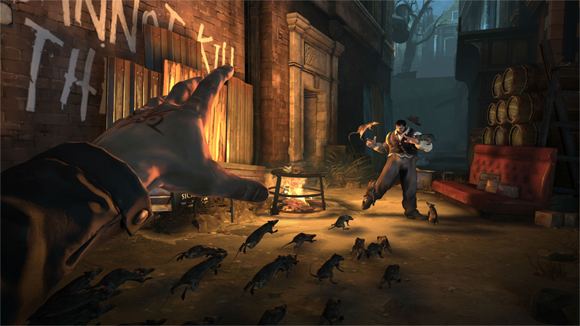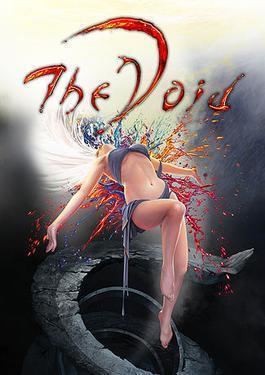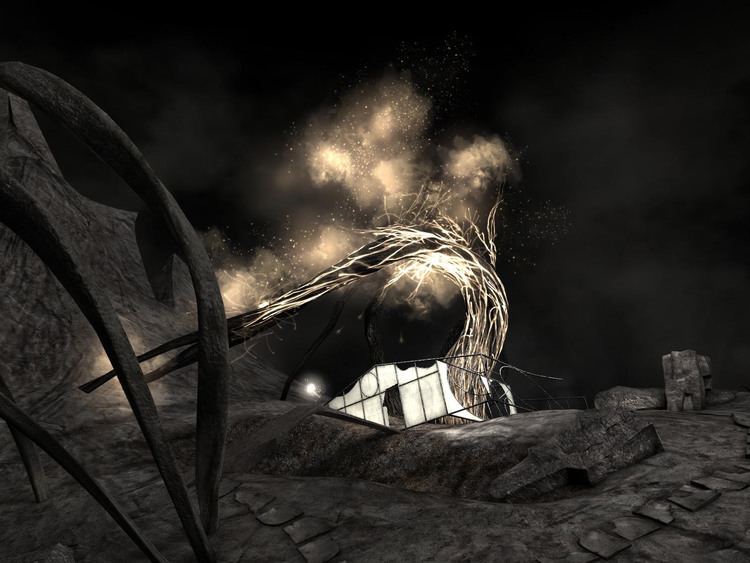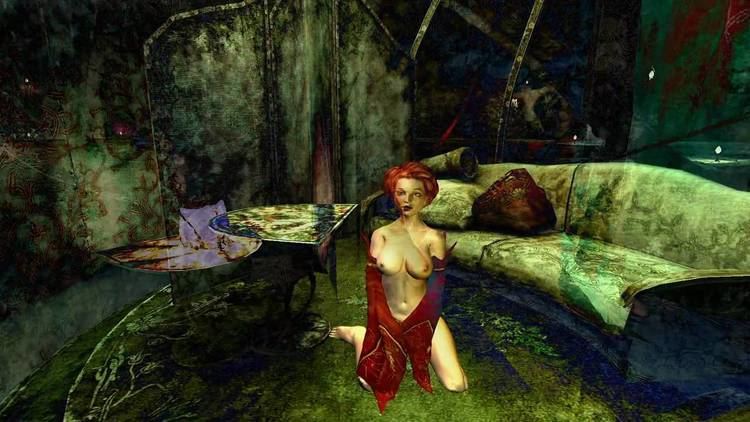8.8 /10 1 Votes
4.3/5 GOG Initial release date 17 April 2008 | 9/10 Steam Genre Adventure game | |||||||||||||||||||||||||||||||||
 | ||||||||||||||||||||||||||||||||||
Similar Pathologic, Dark Void, Outcry, Cargo! The Quest for Gravity, King's Bounty: The Lege | ||||||||||||||||||||||||||||||||||
The Void (also known as Tension, Russian: Тургор) is a 2008 first-person adventure computer game developed by the Russian studio Ice-Pick Lodge and published in Russia, other CIS-countries, and Poland by ND Games on 17 April 2008. It won the "Most Original Game" award at the Russian Game Developers Conference, KRI in 2007. The game was released in English-speaking regions on October 23, 2009, and then as a digital download on Steam since December 16, 2009.
Contents

Synopsis

The player takes on the role of a lost soul that accidentally lingers in a place called "the Void" before meeting its absolute death. The Void is a purgatory-like place, in which the most valuable thing is Color, a liquid that represents lifeforce. Color is scarce, and the void's inhabitants are plagued by famine. These inhabitants are beautiful naked Sisters and monstrously deformed Brothers; two conflicting factions that the player must interact with. Color is a universal resource in the game — it functions as the player's health, armor, stats and ammo. With the help of Nameless Sister, the player finds out that there is a way to escape the void and be reincarnated on the "surface", but in order to do this the player must disguise himself as one of the Brothers and eventually confront them.

Over time, the Brothers will reveal themselves later in the game. These Brothers are: Mantid, the "Elder" of the Brothers, who walks on stilts, and has a spear impaled in his abdomen. Whaler, who wields two blades, and his head is sewn onto his back. Pit, who is fused with a mining drill. Ironclad, who has multiple cannons that fire at the player. Tyrant, who has several limbs and heads along with three visible hearts, rolls along on a stone wheel. Caterpillar, who is connected to a rolling sphere(s) through tubes in his abdominal area. Warden, which forms a cage made of his ribs, and hangs from the ceiling like a swinging birdcage. Montgolfier, which, in the Russian version, had hair, but in the English version, doesn't. He is fused with a hot air balloon. Triumphator, who is fused with a large, gear-powered phonograph, and acts as a one-man band. And lastly, Patriarch, the oldest of the Brothers, who is similar to a senior in a wheelchair, and appears to have no head.

The Brothers, depending on the player's actions, may feel aggressive, unsure, or sympathetic for the protagonist. Patriarch and Montgolfier are said by the other Brothers to be the most fond of him, followed by Caterpillar and Triumphator. Tyrant and Warden are probably the most domineering of the Brothers, along with Pit and Whaler, who assess the player negatively. Mantid and Ironclad are generally neutral, although their behavior may change from the player's actions.
Gameplay

The Void is played from a first-person perspective. Color, the character's primary resource, exists "naturally" in the Void as Lympha. However, collected Lympha of Color cannot be used directly and must be processed in the hero's Hearts first, where it is slowly drained out, becoming Nerva. Each Heart also corresponds to a glyph; more complex game actions are done by drawing Nerva-infused glyphs on screen using the mouse. When drawing a glyph, time slows down to allow the player to carefully draw it. Typical game actions are talking to NPCs, fighting predators or Brothers, collecting plants and growing gardens.
The Color inside Hearts also acts as the hero's health and character stats. There are seven Colors at the player's disposal — Silver, Gold, Violet, Azure, Crimson, Amber and Emerald – each one having its own properties while inside Hearts and how they affect the Void when used; for example, Gold increases the Sisters' trust while inside Hearts, lowering the amount of Color required to open their hearts, but when used in the Void it incites jealousy in the Brothers, making them more prompt to rip opened hearts out of the Sisters.
The strategic part of the game takes place on the map of the Void. The Void consists of several domains associated with specific Sisters. Each domain in turn consists of several chambers. When the player is on the map, time flows and the hero processes Color in his Hearts. If no Color is left inside, the hero will die. Time stops when the player is in a chamber, so that the player can explore locations without time pressure.
The game has a fixed time limit of 35 cycles (a cycle represents a rough equivalent to an in game day). New Color appears at the beginning of a new cycle, but what color that cycle brings is random.
Reception
Overall, the game has received positive reviews in Russia and abroad, with the exception being the Polish press, that played the non-directors cut edition. The German version, the director's cut of the Russian version, received more favorable reactions ranging from medium to high scores. In the first international reviews the game got high scores, and enthusiastic praise from Rock, Paper, Shotgun.
In the first English language review, Resolution claimed it to be rarely fun, but offering "a viciously beautiful, enormously interesting experience." Rock, Paper, Shotgun wrote an overwhelmingly positive review, saying "The Void is the most important game you are GOING TO FUCKING PLAY."
Piracy
The Void was noted in Russia for its developers' reaction to piracy. When the game appeared on the largest Russian torrents.ru tracker, the developers talked to the downloaders in the thread, answered game related questions and encouraged them to buy the game, if they liked it. Also, the developers made an official torrent containing all bonus material from the gift edition.
Editions and titles
The game was released in several countries under different titles and with minor and major changes.
